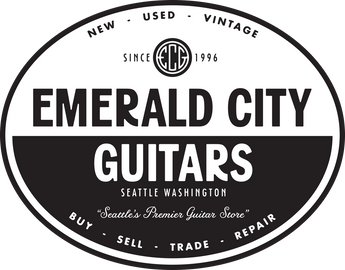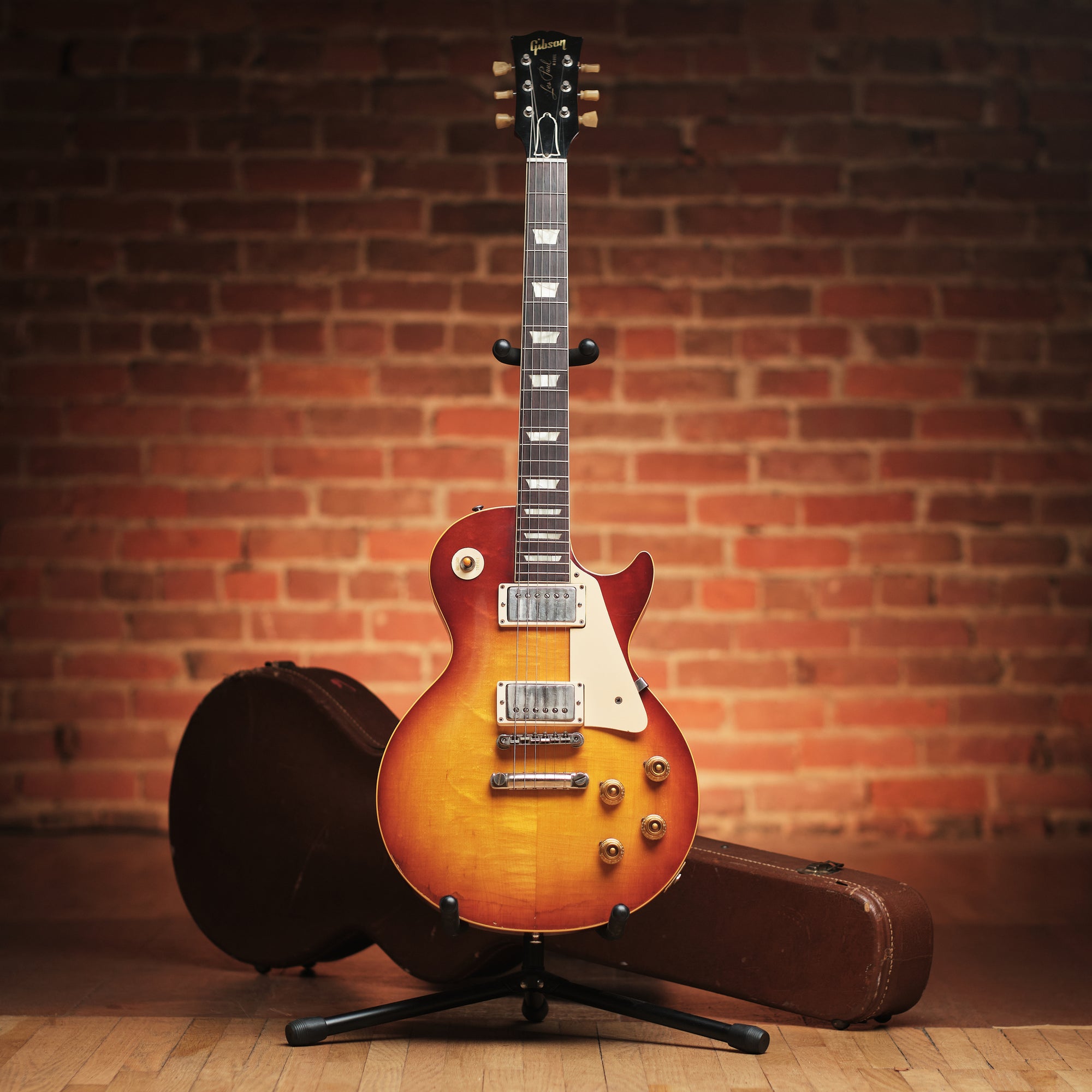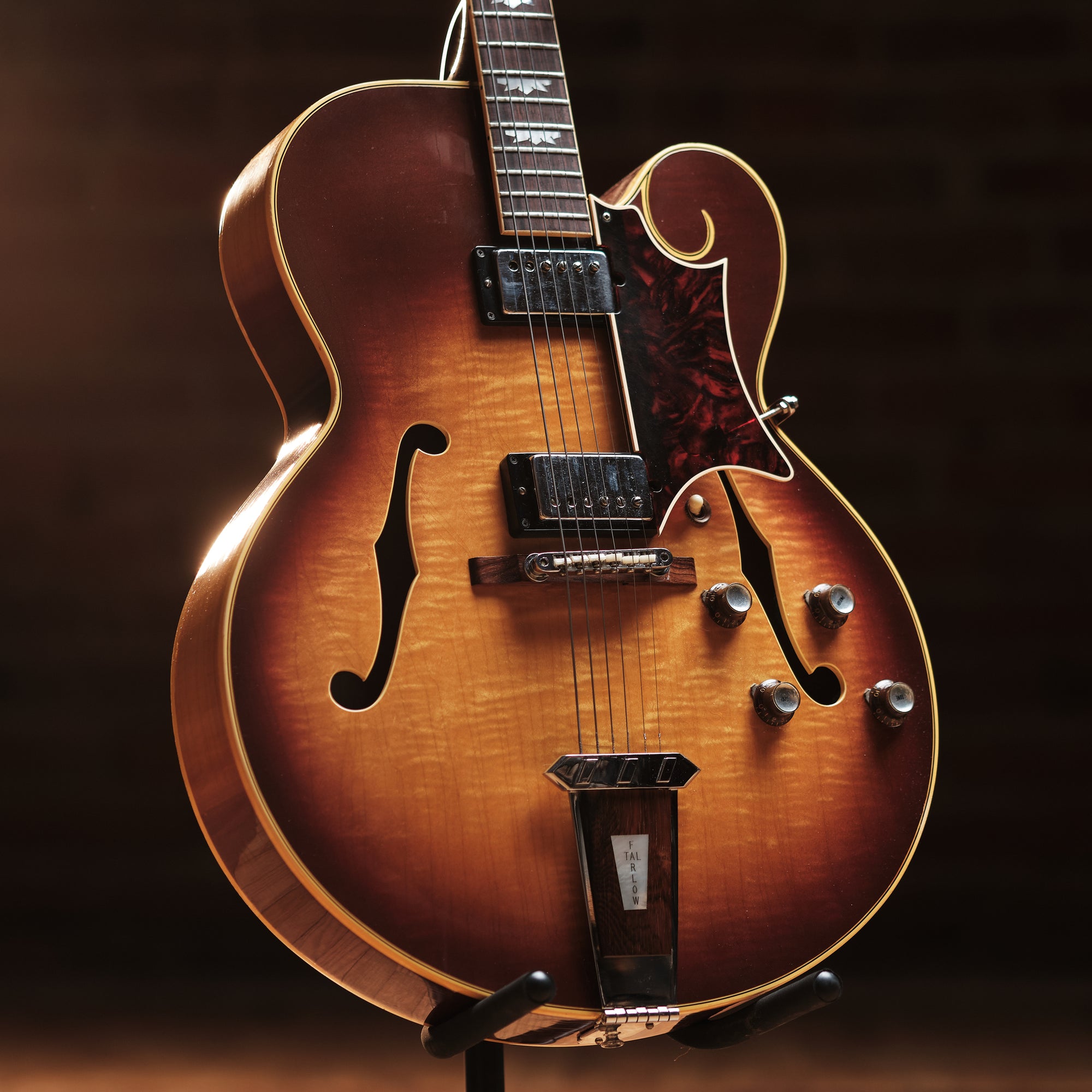Max Burst

Have I ever mentioned the controversial nature of the vintage guitar industry? Here's another hall of fame topic that has continually elevated the collective blood pressure of the guitar forum community for years: Burst replicas. Some folks think they're unethical. Some even think they should be destroyed. There's a sizable portion of the guitar community that thinks you shouldn't inlay 'Gibson' on your guitar unless you work for Gibson. While I understand most of these arguments and sympathize, I tend to exclude myself from the debate without exception. These guitars exist, they will continue to exist, and the best I can do as a steward of these instruments is to represent them as accurately as possible and love them despite their dubious origins.
Pete “Max” Baranet would conservatively be 3 of the 4 heads on a hypothetical Mt Rushmore of Burst replica builders. He’s probably the first name you come across when delving into this niche of vintage Les Pauls, and rightfully so. His career was alarmingly long and illustrious, and boasted a client list as impressive as any modern builder out there. As the Burst market grew more informed through the 90s and 00s, the quality of replicas was forced to improve accordingly. Due to his lengthy career, this resulted in a huge disparity in the accuracy of Max guitars throughout the years. Some early builds wouldn’t fool even the most cataract-ridden novice. Many of his later instruments have and will continue to be passed off as genuine Bursts to unknowing collectors and shops. This particular example is one of his later works. It is a tremendous guitar that illustrates the very best work of one of the industry’s master craftsmen. We’ve seen quite a few Max Burst, but none finer than this one.
Klon Centaur

It’s no secret that the world of vintage guitar gear is steeped in controversy, but no single subject draws more ire than inimitable Klon Centaur. Breach the topic among the wrong crowd and you’ll be wishing you brought up the 2020 election or defended Bill Cosby instead. Detractors claim that there’s nothing special about an original Klon, and one of the many clones manufactured today will provide the same results for under $200. Proponents of the Klon will tell you that none of the copies come close and there’s no substitute for the real thing. Sounds like a flimsy argument from the Klon fans, but when you consider that John Mayer, Nels Cline, and Jeff Beck are among them maybe it warrants a closer look. Does the magic lie in the discontinued NOS diodes? In the unnecessarily large cast-aluminum enclosure? Does the horsie play a causal role in preserving harmonic richness? I have more questions than answers on the subject I’m afraid.
When determining the veracity of a pedal’s hype, one of our primary concerns is consistency. A Klon could be good, bad, or indifferent, but that only speaks to the particular pedal and not necessarily the model itself. It’s for this reason we like to keep three examples at hand at all times, for the sake of tonal perspicacity. After many hours of collaborative testing at the shop followed by rigorous Socratic discourse, we are happy to report that all three Klons sound excellent. Through Marshalls, they are excellent. Vintage Fenders, excellent. Magnatones, awesome. A Dumble? Extra excellent. We used Strats, Teles, 335s, and Bursts all with results of similar quality. Our experiments came back conclusive, and we trust that our research will put this debate to bed once and for all. If you have the means, I highly recommend picking one up.
1966 Mosrite Custom

Southern California was the absolute epicenter of development for the modern solid body electric guitar in the 1940s an 50s. Names like Bigsby, Rickenbacker, and Fender are still famously lauded as early pioneers, and rightfully so. Like in many industries, though, the American electric guitar was built upon the backs of countless anonymous builders, designers, and engineers whose contributions were every bit as instrumental, but didn’t quite make the history books. In many cases, only a few vague forum posts or an archived column from a local newspaper stand in the way of these names slipping into complete obscurity. As a guitar enthusiast, I’d wager that Mosrite is a name you’re familiar with. With equal certainly I’d wager that Bill Gruggett is a name you’re unfamiliar with. Both are Bakersfield guitar legends, and both had a hand in the creation of this guitar.
The legacy of Mosrite may very well be their association with the band The Ventures and the resulting signature model, however the company’s bread and butter for years was the creation of custom one-off instruments. This particular guitar was a part of a set with a matching bass, which also happens to be available on Reverb from an unrelated seller. The body is from a 1966 Combo model, Mosrite’s semi-hollow offering at that time. The neck is a super slim Joe Maphis signature model, which at the time was very much in style for professional players. Pieced together at the factory, the guitar was then sent to Bill Gruggett for finishing. For years, Bill was in charge of finishing at Mosrite and went on to work at Hallmark before starting his own guitar company in the late 60s. His instruments found their way into the hands of some of the day’s most prominent players, but fame and fortune wasn’t in the cards for Bill. He continued to build custom guitars in relative obscurity well into the 1990s, and remains a fixture in the history of the electric guitar for those who know of him. This custom Mosrite is an amazing piece, not only for its custom nature, but for its association with two Bakersfield legends.
1956 Gibson J-45

This is a true white whale of vintage Gibson acoustics. Not only is this in excellent and original aesthetic condition, but it is completely dialed in and needs absolutely no work to speak of. The most amazing part? This guitar has remained largely untouched, somehow evading the unforgiving albeit well-meaning hand of early American guitar lutherie. The action remains low with plenty of saddle, and the neck has never been reset. All the braces remain glued to the guitar with no evidence of repair, an unusual experience to say the least. The bridge has been replaced, but with an appropriate replacement of the correct size. It’s days like this that compel me to buy a lottery ticket.
Levity aside, Gibson acoustics from the middle of last century often didn’t receive the best treatment from their owners or repairmen, until recently that is. For whatever reason they lacked the prestige of Martin guitars, and fell victim to heavy abuse and lazy ham-handed repairs. Do a quick Google search for mid 50s J-45s, at the time of this writing I am unable to find a single example without a terrible oversized bridge, bridge plate, broken braces, or a combination of all. Once they’re modified there’s no bringing them back to original, so the ones that remain that way are a true rarity. This particular J-45 is not only exemplary in condition, but also sounds sensational and plays as well as any modern guitar you’re likely to find. If you’re looking for a workhorse guitar to drag around to bar gigs, this may not be the instrument for you. If you’re a reasonably careful player who takes care of their guitars, I can’t think of a better combo for a great vintage player with dynamite investment potential.
1999 Fender Nocaster

It’s funny (depressingly dating) that the early Fender “relic” guitars are now aging into the first wave of vintage collectability. A tale as old as the guitar itself, the lowly and affordable used instrument has transformed before our very eyes into a premium retro collectable with a price to match. “$4,000?! I sold one of these in 2002 for $350!” Sure ya did, pal. We’re all turning into the sad-ass old guys we grew up laughing at. Time is a flat circle. Aaaaaanyway.
This particular Nocaster was built by the legendary former master builder (and current cautionary tale regarding drunk Facebooking) John Cruz. Until his surprise mandatory retirement in 2020, John was Fender’s most tenured and popular builder. His waiting list was years long, and his prices skyrocketed accordingly. The quality of his instruments is absolutely undeniable, and this ’51 is a shining example of that. Nearly 25 years of honest play wear has transformed this tastefully-executed subtle relic job into a surprisingly believable vintage finish, legitimizing some of the less realistic aging techniques employed in the early days. A pair of Lollar pickups and compensated saddles will be a welcome change for the player, making this a gig-ready vintage Fender. All the tone and quality of a real Blackguard at 5% the cost? Not much wrong with that.



